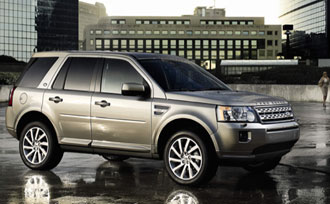Tata Motors Profits Surge on Jaguar, Land Rover Sales
By wchung | 02 Dec, 2025
Tata Motors’ consolidated profits surged on robust global demand for Jaguar and Land Rover as the once-troubled luxury brands enjoyed their fourth straight quarter of profitability, despite supply constraints and rising commodity prices, the company said Tuesday.
Consolidated net profit for the June-September quarter was 22.2 billion rupees ($502.7 million), up from 217.8 million rupees ($4.9 million) during the same period last year. Total sales rose 37.2 percent to 296.2 billion rupees ($6.7 billion).
“The numbers are substantially better than expected, especially on the JLR front,” said Angel Broking analyst Vaishali Jajoo. She said her chief concern is whether the company can sustain margins in the face of rising input costs and spending for new product launches.
The bulk of profits — 17.2 billion rupees ($387.8 million) — came from Jaguar and Land Rover, which Tata Motors bought from Ford Motor Co. in 2008.
China and Russia led sales of the brands, growing 72 percent and 52 percent over the same quarter last year. Jaguar Land Rover chief executive Ralf Speth said Tata is negotiating with potential partners to open an assembly plant in China. Speth, who was elected to the board Tuesday, said the company plans to begin assembling a Land Rover model in India next year and if that goes well may start assembling Jaguars in India as well.
Executives said Tata is hiring at its U.K. plants and the expansion into China and India would only increase the need for U.K. workers, to package the car kits for shipment overseas.
Rising commodities prices and supply chain bottlenecks hurt margins, the company said.
Tata has had trouble getting enough Jaguar Land Rover engines from Ford to meet demand, and India’s car boom has strained suppliers, who are now investing to expand capacity, executives said.
Tata Motors has been raising prices, by 2.5 percent since April, and did not rule out further hikes.
Profits for Tata Motors, India’s largest commercial vehicle maker, on a stand alone basis slid 40.6 percent, to 4.3 billion rupees ($97.9 million) from 7.3 billion rupees ($164.9 million) during the same period last year. Chief financial officer C. Ramakrishnan said that subtracting earnings from a share sale during the year-ago period, profits grew 21 percent, on the back of strong domestic demand.
Sales of the ultra-cheap Nano car have been slow, with about 70,000 delivered since its March 2009 launch.
Initial bookings, made in the first rush of publicity about the snub-nosed car, have been filled. Now Tata Motors is embarking on the arduous process of reaching its true target customers: first-time car buyers with limited buying power and often-questionable credit.
Group chief executive Carl-Peter Forster said the biggest challenge is arranging for affordable financing.
“We have to break new ground in how we market it and how we make financing accessible,” he said. “We see good underlying demand, which will convert into sales.”
The company has yet to ramp up to full production and only distributes the Nano in five of India’s 35 states and territories.
The groundbreaking car — which at a 100,000 rupee ($2,261.4) factory price has been billed as the world’s cheapest — no longer comes so cheap. Tata Motors has raised the price twice, by a total of 8,000 rupees ($180.9), executives said.
A series of mysterious fires, in which the Nano seemed to spontaneously burst into flames, alarmed some customers. Forster said the company has completed its second safety review and found no underlying design flaws, but did identify some “unusual circumstances,” which it will correct.
Tata Motors will offer Nano owners a cover for the catalytic converter, which when it heats up can ignite a newspaper. It will also install a fuse in the electrical system to prevent short circuiting, which can happen if customers install post-sales electrical equipment.
“We have to make the vehicle even more robust,” Forster said.
ERIKA KINETZ, AP Business Writer MUMBAI, India

Land Rover's small SUV, the LR2, is helping drive profits for the once troubled maker. (Photo courtesy Land Rover)
Asian American Success Stories
- The 130 Most Inspiring Asian Americans of All Time
- 12 Most Brilliant Asian Americans
- Greatest Asian American War Heroes
- Asian American Digital Pioneers
- New Asian American Imagemakers
- Asian American Innovators
- The 20 Most Inspiring Asian Sports Stars
- 5 Most Daring Asian Americans
- Surprising Superstars
- TV’s Hottest Asians
- 100 Greatest Asian American Entrepreneurs
- Asian American Wonder Women
- Greatest Asian American Rags-to-Riches Stories
- Notable Asian American Professionals

